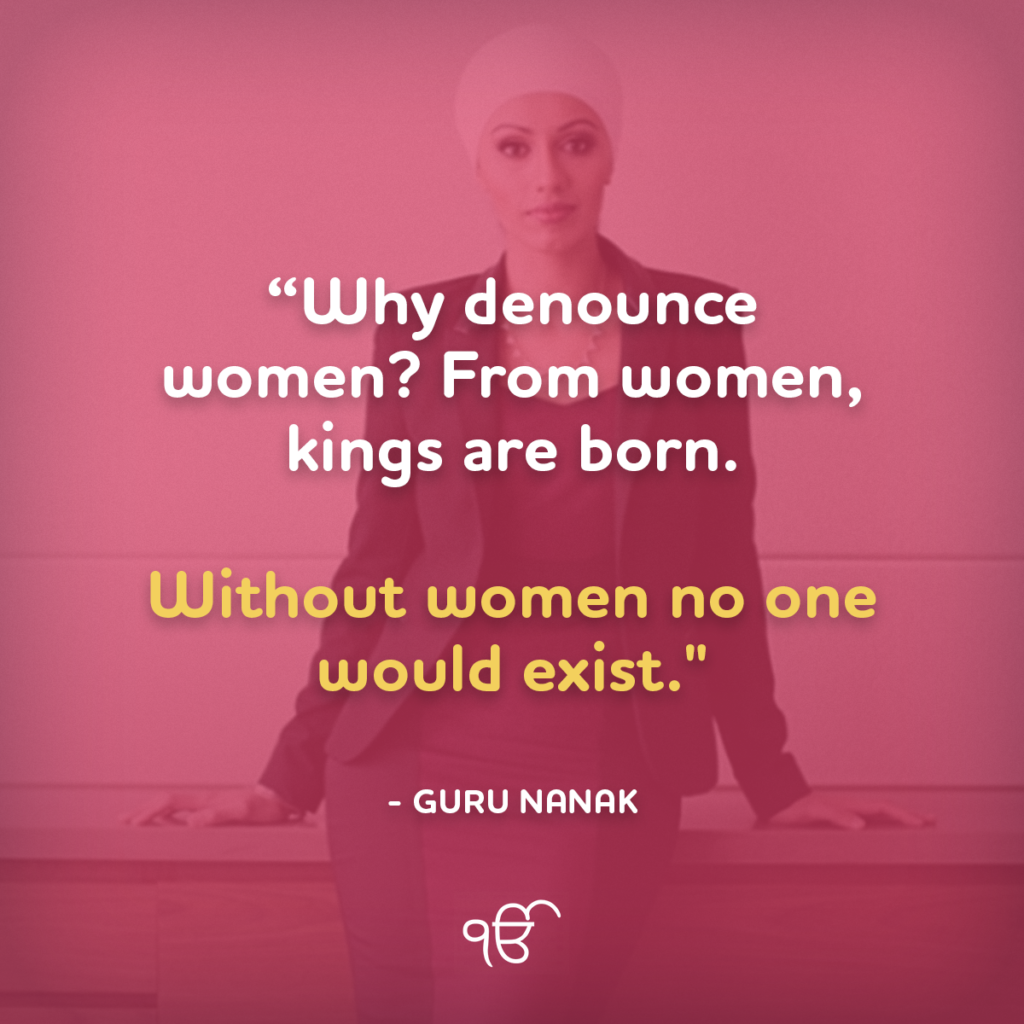In spite of long standing social oppression of women, the Sikh Gurus have always proclaimed a women’s right to equality. At a time where customs like child marriage and sati, or the burning of a widow on a husband’s funeral pyre, were common, Guru Nanak spoke out against women’s oppression. He insisted that they receive equal treatment as they are equal in the eyes of God.

Sikh Women are Important Figures in the Faith
Guru Nanak had a close relationship with his older sister, Bebe Nanaki, and she is an important figure in the Sikh faith. He was sent to live with her at the age of 15, and she is said to have been his first follower, recognizing his enlightenment as he grew.
Other Gurus followed in Guru Nanak’s footsteps, breaking more barriers and customs over the years. Guru Angad fought for the education of all Sikhs, including women.
Guru Gobind Singh made the Khalsa initiation ceremony open to women, encouraging them to keep the 5 Ks as men do. The word Khalsa refers to both people who consider Sikhism to be their faith, as well as those who have gone through the ceremony. Guru Gobind Singh taught that the Khalsa must not associate with kanyapapi, or those who sin toward women. He also demanded that any women captured in war time would be treated with respect, never taken as slaves or wives.
The Role of Sikh Women in Today’s World
Today, Sikh women hold critical roles in Sikh gurdwaras; they are free to work as granthis, or ceremonial readers of the Sikh Holy Book, Sri Guru Granth Sahib, or to lead congregations
Women have also always been free to wear the turban, although many did not choose to do so as, culturally, it was traditionally worn by men. Recently, more Sikh women have also begun to adopt the turban, which is a symbol of the universal equality of all mankind.